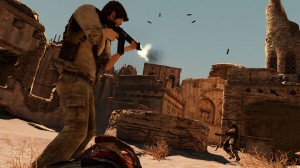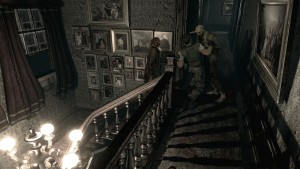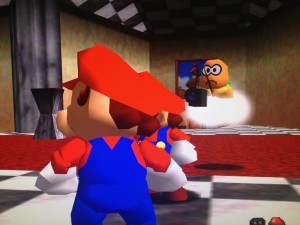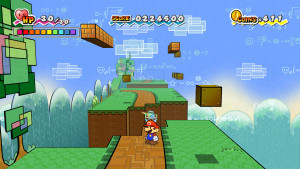Hello and welcome, fine peoples, to another wonderful time with Mel! With the recent release of Everybody’s Gone to the Rapture, there has been some talk about the “game” and games of its type. Examples like Gone Home and Dear Esther come up as other “walking simulators” where exposition happens at or around the player with little other action required other than walking from point to point. Some minimal environmental interaction is had in Gone Home, but there exists no conflict in the traditional sense and no real failure state which, reasonably, calls into question whether this is actually a game.
Personally, I care little for the debate but am willing to agree that these products do not offer a game to be played, rather they offer stories to be experienced. I also have yet to be interested in any such experiences, even the much lauded Journey, so how one chooses to define these things truly matters little to me. What these discussions bring up that does interest me, however, is the use of interactive media to tell a story. The nature of it requires, for the most part, that the player be able to manipulate the viewing angle and the pacing of progression. Whereas these elements being forfeited to user control are minimized or contextualized amid the more important elements of gameplay in traditional games, these purely narrative-driven games hinge themselves entirely on how the story is presented. And it brings to the fore the issue of player control over the camera through which we view the events of the story.
While cutscenes do exist that remove control from the player, more and more these days games of all kinds involve important exposition during moments of gameplay. And even during non-expository moments, a game’s atmosphere must still be successfully conveyed to justify the events of the expository moments. So the issue still remains of how to present and design a world around a user controlled camera. Especially once games became fully three dimensional, game developers had to keep in mind where players would look and how to direct their attention before finalizing their ideas. Simply handing the player full control of the camera is not enough to ensure the most important things will be seen, visual and sometimes auditory queues are needed to direct the player’s vision. There are many ways to go about this and they all require the game’s purpose in mind to help pick the best option.
First person cameras are often seen in shooting games and horror games as well as the aforementioned narrative-driven titles and the reasons for this popular dynamic are many. A first person perspective offers the clearest line-of-sight on the player-characters focal point, which is crucial for games where aiming at things is common. It also restricts a player’s peripheral vision as the focal point also becomes the player’s heading. These elements lend themselves well to close encounters, either with NPCs, environmental details or enemies. The “immersiveness” of this perspective affords greater agency to the player for generally less control by the developer, which in turn means elements of story will usually be folded more thoroughly into the interactive elements. “Walking simulators” often choose this perspective because the player is assumed to be the avatar, although some criticisms state that this is little more than a shallow attempt at involvement in some instances.
When the camera does its job best is when the player forgets about it entirely. When a camera must be “wrestled” with to see something, or avoid danger in the case of camera-dependent control schemes, then the gameplay becomes too mechanical. A great deal of modern game mechanics are centered around avoiding player frustration with camera control, everything from lock-on abilities to radar or minimap displays keep the player from demanding more of the camera than can otherwise be afforded. Oftentimes these mechanics are worked into the game’s world whereas the camera itself is rarely ever regarded directly, with perhaps the sole exception being Super Mario 64 wherein the developers personified the camera as Lakitu to make sure players would understand direct camera control in a new three dimensional Mario game.

The Uncharted games represent a high profile third person shooter series where movement and vision are independent.
The controllable third person camera in this game, as well as others, emphasizes character positioning and animation as the character generally becomes the player’s focal point with the camera in some form of controlled orbit. While a first person view emphasizes smaller detail and may try to play with the limited cone of vision, third person cameras emphasize the wider game world above and around the player-character as much as possible. Threats and encounters are usually not meant to be out of sight unless by an intended obstruction and character movement can be independent of a camera’s facing and can make for a more traditionally filmic presentation of characters on a screen. What does not change between these two perspectives, however, is the players general unwillingness to look up. Ceilings in games are often barren and contain little of relevance for the well-observed reason that most players tend to focus groundward or straight ahead. Putting something high up without any visual or auditory clues is actually one of the easiest ways to hide something from a player, and this fact does not go unregarded during world creation. The third person camera can actually exacerbate this trend as cameras are often oriented at a downward angle from above, looking at the player-character.
The job of the player is to be observant of their surroundings and the job of the developer is to predetermine the necessary level of observation, but one mechanic puts a whole different spin on this approach. Fixed camera angles are a rarity in this day of VR headset hype that seeks to put the player into the (almost literal) shoes of the characters, peering around their environment in an attempt to heighten the immersive principles of the first person camera as much as possible. The fixed camera fell out of popularity alongside older tech sidesteps like the pre-rendered background as well as older game genres like the point-and-click puzzle/adventure. But with the nostalgia boom ratcheting up, it is entirely possible (read: likely) that one or both of these things will see a resurgence in high profile gaming. And along with them will come several personally adored development techniques that focus on scenic presentation, a denseness and purposefulness of space, and an emphasize on the “personality” of the environment. All of my favorite fixed camera games have also played host to my most memorable locales. While player agency and action-oriented empowerment take a hit, the developers are given near-complete control over the visual aspect of the game and can therefore better define how a place is meant to feel.

Resident Evil’s fixed camera means every hallway is a carefully considered image that attempts to set the scene.
Getting back to a time where the most popular games featured this style of production is probably a pipe-dream, even (or especially?) with games like the Final Fantasy VII Remake in production, but I think we have navigated through the lull at least. Games are broadening in many regards, and the market is easily capable of sustaining efforts from more than just one overarching approach. We are moving slowly away from the days where a single genre can dominate the charts, be it platformers in the ’80s, RPGs in the late ’90s or shooters in the mid- to late- 2000s.
So, I hope I shed some light on the design of camera controls, though of course I am by no means an expert. If you have anything to add or highlight, by all means do so in the comments!

